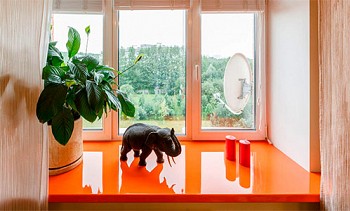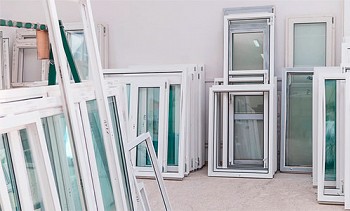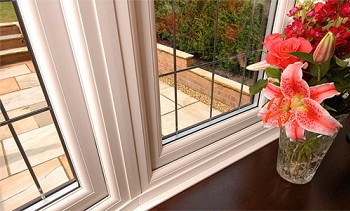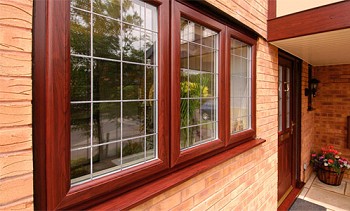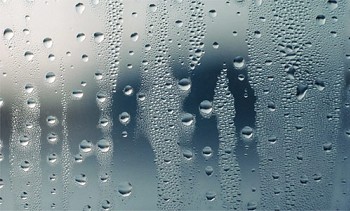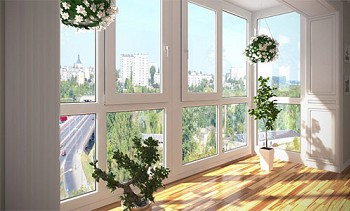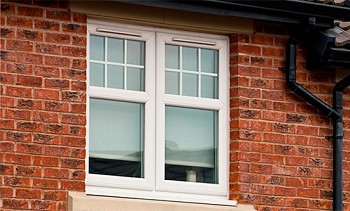Plastic windows are designed for long-term operation for 10 - 15 years. In order to avoid problems with them, it is necessary to carefully approach the choice of the design itself and the implementation of installation operations. At times, more depends on the method of installing the window and the qualifications of the installers than on the quality of the structure itself.
Manufacturers of windows and other metal-plastic constructions have developed certain technologies for wall mounting of various materials, which must be followed without fail. It will be rather annoying if a wall starts to freeze around a five-chamber profile with a two-chamber energy-saving double-glazed window or mold spots appear.
In Europe and Russia, special standards have been adopted that regulate the number, type and sequence of operations during the installation of plastic windows. In particular, GOST 30971. 2002 and GOST R52749 are applicable in Russia. 2007 It is difficult to fulfill all the requirements of the standards, but focusing on them is absolutely necessary - only in this case the window will serve properly throughout the stipulated time.
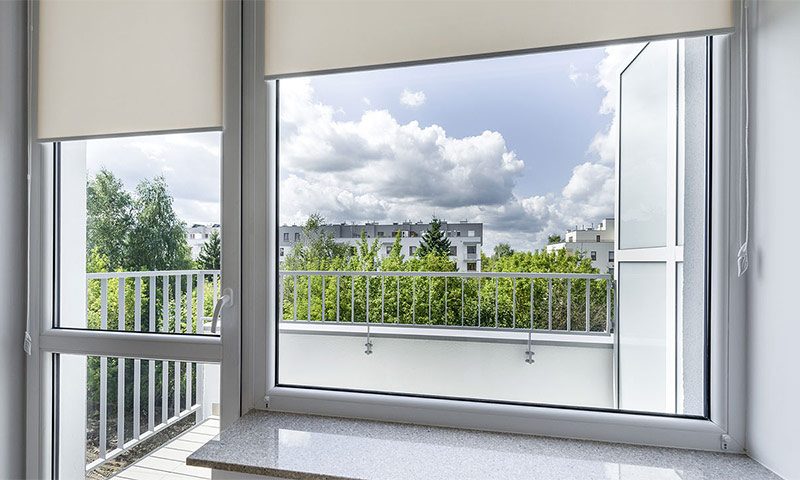
Content:
Window opening preparation
Work begins with the preparation of the window opening.
This process consists of several stages:
 1. Dismantling old windows
1. Dismantling old windows
 2. Removal of all types of sealants and heaters;
2. Removal of all types of sealants and heaters;
 3. Construction waste removal.
3. Construction waste removal.
 4. Alignment of the walls of the opening.
4. Alignment of the walls of the opening.
Correct installation of plastic windows in accordance with GOST is possible only if they are manufactured on industrial equipment and fully comply with previously made measurements. Even at the stage of preparatory work, it is necessary to take into account the fact that the opening should be 2 - 5 cm wider and higher than the window structure, so that there can be formed a full-fledged mounting seam, consisting of 3 layers.
The easiest way is if the windows are installed in new buildings, there disappears one of the most difficult stages - dismantling. But in case of replacement of windows, it is required. The removal of the old window begins with the removal of the wings. As a rule, there are no difficulties at this stage if the frame has not completely rotted. In this case, you must first remove the glass so that they do not fall out when removing the sash.
The frame itself can be removed in several ways, among which there are also very gentle, but time-consuming, allowing you to keep the frame intact and suitable for further use, for example, in a country house or as a bearing element of a greenhouse. More often than not, the old frame is simply cut with a circular saw and removed into fragments.
The opening is thoroughly cleaned of debris and the remains of the old sealant. If there are recesses, potholes and cracks with a diameter of more than 2 mm on the walls of the opening, then GOST requires that they be sealed with a plaster or putty mortar. Few adhere to this point due to the fact that the plaster dries out completely within 5-8 days, which is not very convenient. All this time the opening will be open. But you can use quick-drying gypsum or polymer mixtures, which will reduce the waiting period to several hours.
Installation and alignment of the window in the opening
After proper preparation of the opening, further installation continues with the installation of the frame. It should be borne in mind that the structure is installed along a plumb line, and not along the edges of the opening. In most old Soviet-built apartment buildings, and often in private houses, the side walls of the opening are far from the vertical, and the lower and upper are from the horizontal.If you take one of them as a reference point without first checking the level, then you can install the frame, but with the wings it will be more difficult - all the fittings are designed for strict compliance with the level.
When installing plastic windows according to GOST, the instruction requires compliance with certain tolerances - the vertical deviation is not more than 3 mm / m. (less than 4.5 mm. for the entire length of the structure). The installation of the frame is verified using a water or laser building level.
Prior to seam foaming, it is possible to check the sheer of the frame in another way - just open the sash more than halfway. If it spontaneously opens further or begins to close, then the window is installed in violation of the vertical and the position of the frame must be adjusted. If this is not done, there will not be proper sealing, which threatens not only with a lower temperature in the room, but also damage to the window structure due to the appearance of ice.

The frame is fixed to the wall by means of anchors or special mounting plates, if any. Naturally, before fixing the frame, it is necessary to dismantle the glass packet and remove the sashes. This will greatly simplify the alignment of the frame and its installation. Usually, a correctly made PVC window made on industrial equipment is very easy to disassemble into its component parts (except the frame) and then assemble it back, having the necessary skills, of course.
For fastenings in the frame, from the inside, with a drill, holes are made for anchors - three on vertical walls and two on horizontal. Their diameter is 8 - 10 mm, depending on the hardware used. When drilling, a conventional hammerless drill is used, a perforator will be needed when preparing holes in the wall material. If the wall is wooden or made of cellular concrete, then you can only use a drill.

The sequence of attachment is the lower anchors on both sides (do not screw completely), then the upper and middle ones. At each stage, the sheer design is rechecked. When tightening the anchors, moderation should be observed - the frame, especially in the middle part, is very easy to deform.
After fixing the frame in the aperture, the support pads are not removed from the bottom, they act as a retaining structure, partially relieving the load on the anchor. During installation, the support pads must be installed at the edges of the frame and at the point of contact of the vertical middle pillar (impost) with the horizontal lower part of the frame.

The formation of a three-layer mounting seam
Professional installation of plastic windows in accordance with GOST provides for the presence of a three-layer seam between the wall and the cut of the frame, which should provide:
- thermal insulation;
- noise protection;
- vapor permeability;
- waterproofing.

1. Polyurethane foam.
2. PSUL - vapor permeable layer.
3. UGK - hydro-steam insulation tape.
4. Stand profile.
5. Support pads.
6. Silicone
Several types of materials are used to form the seam - PSUL steam-waterproofing tape (or STIZ-A type sealant), polyurethane foam, vapor-proof tape.
Sticking PSUL
The formation of the seam begins even before the start of installation, if the PSUL tape is used. It is glued around the perimeter of the frame or opening with a self-adhesive composition applied to the surface of the tape twisted into a roller.

This will allow you to achieve two goals at once - to create reliable protection against moisture penetration into the seam from the outside and to prevent the squeezing foam from extruding beyond the frame cut. The tape is produced in accordance with GOST 30971-2002 and created specifically for the arrangement of ventilated joints during the installation of metal-plastic structures. It is used only in conjunction with mounting foam. PSUL is made of polyurethane foam, impregnated with special hydrophobic components and coated with a self-adhesive layer.
It is produced in a wide range of sizes, after gluing it expands independently and completely fills the seam, sealing it.
Characteristics of PSUL:
- UV resistant;
- not afraid of frost and heat (temperature range for maintaining basic properties - 45 0C ... + 85 0FROM);
- chemically inert;
- does not harden with time;
- water repellent;
- not susceptible to biological damage (fungus, mold, mosses);
- has good vapor permeability (more than 0.15 mg / (m * m * Pa).
A tape is sold in rolls, ready for direct use after unwinding. The adhesive layer has excellent adhesion to PVC and most wall materials, which must be dry and free from dust. Porous materials are recommended to be treated with deep penetration primer.
The speed of expansion of the tape depends on the temperature. At + 30 0C it expands completely in 30 minutes, at zero temperature - for 48 hours. Therefore, when installing windows in autumn or winter, it is necessary to use a building hair dryer at the minimum position of the heating controller.

Filling the seam with foam
After installing the protective tape, the seam is blown with a mounting foam (polyurethane foam sealant). It is advisable to use professional PRO foams that are sprayed with a gun. They provide the proper density of the material after expansion and excellent thermal insulation, while their consumption is lower than household sealants sprayed from aerosol cans.
Manufacturers offer universal foam sealants in winter and summer versions. This definition applies only to the minimum temperature at which they can be applied. Summer is used at temperatures above +5 0C, and winter can be sprayed at a few (up to - 10) degrees of frost. After polymerization (contrary to popular belief) they do not differ in either mechanical or thermotechnical properties.

When working with foam, it must be borne in mind that polymerization occurs exclusively upon contact with moisture. Before filling the seam with foam, all surfaces must be moistened, and after finishing spray a little water around the perimeter. But it must be remembered that the foam expands to 40% of the original volume (meaning professional material), therefore, it is not necessary to densely fill the seam. If the sealant is blown into the gap too much, then when expanding it is able to deform the frame.
In order to partially level the loads arising during the polymerization of foam, it is necessary to fill the seams with it after installing all the flaps and double-glazed windows and moving the opening parts to the closed position.
When using a foam sealant, it should be remembered that, regardless of whether it is professional or household, it is afraid of exposure to ultraviolet radiation and moisture from the air. In direct sunlight, it collapses faster, in the shade - more slowly. But if you do not protect the heat-insulating layer from external influences, then after 2 - 3 years it will collapse and the cold will certainly penetrate inside the house along the perimeter of the window.
The external PSUL tape does not allow inside moisture or ultraviolet radiation, therefore nothing threatens thermal insulation. At the same time, the structure of the tape allows the excess water vapor to leave the thickness of the seam, it is dried naturally, which also favorably affects the durability. If there is no PSUL tape, then special sealants based on acrylic can be used.
One of the most popular and widespread is Stiz A, specially created for assembly joints of metal-plastic constructions. It is produced in white and brown, you can pick up to any design. It has the same high vapor permeability as waterproofing tape and approximately similar other characteristics.
The composition hardens to sufficient strength so that it can be painted or plastered, but it also retains a sufficient level of elasticity, which can withstand temperature deformation and shrinkage within 15% of the thickness of the seam. Adhesion to aluminum, glass, plaster, concrete and other materials is not inferior to the adhesive layer of the tape. But you can seal only a completely dry seam.
The thickness of the sealing coating is not less than 2 and not more than 6 mm.You can use sealant in the cold season, but before applying it must be kept for several hours at room temperature. The composition is sold fully prepared and is not diluted with water or other solvents. With a partial loss of ductility, it must be heated.
The formation of the inner layer
The inner surface of the seam, from the side of the room, is sealed with the composition of SAZILAST 11 (StizV). It is based on polyacrylates and, after drying, forms a vapor-tight layer that resembles soft rubber. It protects the seam from the ingress of moisture from the room. The sealant has excellent adhesion to putty and plaster compositions, installation of slopes will not cause problems.
In addition to the sealant, one of the varieties of special vapor barrier tapes, with a foil coating or on a polymer basis, can be used for the internal coating of the seam. If the slope will be formed using plaster compositions, then before buying a tape, you need to study the instructions for it, determining the level of adhesion to them.

Finishing work (slopes, window sills, low tides)
The functionality of the window is largely determined by auxiliary elements that are supplied with the window or purchased separately.
Window sill mounting
One of the main elements is the windowsill. As a rule, it is also made of polyvinyl chloride and does not differ in color from the window frame. Its width is determined depending on the thickness of the wall.
The window sill goes under the frame no more than two centimeters. The opening under it is foamed or sealed with a solution, depending on the height of the window sill above the wall. On the inside, it is fixed to the window frame or stand under it; on the outside, it lies freely on the sealing layer. If polyurethane foam sealant is used, then it is sealed with vapor barrier tape or StizV, as well as a three-layer seam. On the sides of the window sill should go downhill at least 2 cm.
The window sill can be any width, but the overhang for the inner plane of the wall should not exceed 6 cm. This will allow convection flows from the radiator to flow freely around it and protect the window from fogging. The inclination of the plane of the window sill from the horizontal to the floor should be within 5 - 60. This will allow you to install a pot or flower vase on it, without risking that they will fall down and prevent the accumulation of dust or drops of water if, for example, you forgot to close the window.

Ebb mounting
On the outside, an ebb is installed to ensure the discharge of rainwater flowing down the window from the wall. The installation of plastic windows in accordance with GOST requires the correct installation of the ebb. PVC also serves as an ebb material, but aluminum, galvanization, and polymer-coated steel can also be used. In any case, the tide should protrude beyond the wall plane by 3-5 cm, or even more, depending on the wind load. It is also necessary to provide an inclination of the ebb plane down from the horizontal by 5 - 80. The ebb is attached to a special profile on the underside of the window, which provides protection against moisture penetration under the frame. On both sides, the tide should go under the slopes that are mounted after installing the tide from the outside and the windowsill from the inside.

Installation of slopes
Slopes on PVC windows are installed a variety of - plastic, plasterboard, plaster. The choice depends on the size of the wall, window and type of decoration. The installation of slopes can be ordered along with the installation of the window, or performed separately during the general repair of the apartment. With a correctly executed installation seam and installation of ebbs and window sills, the slopes perform only decorative functions and have little effect on the tightness and thermal insulation properties of the structure.


